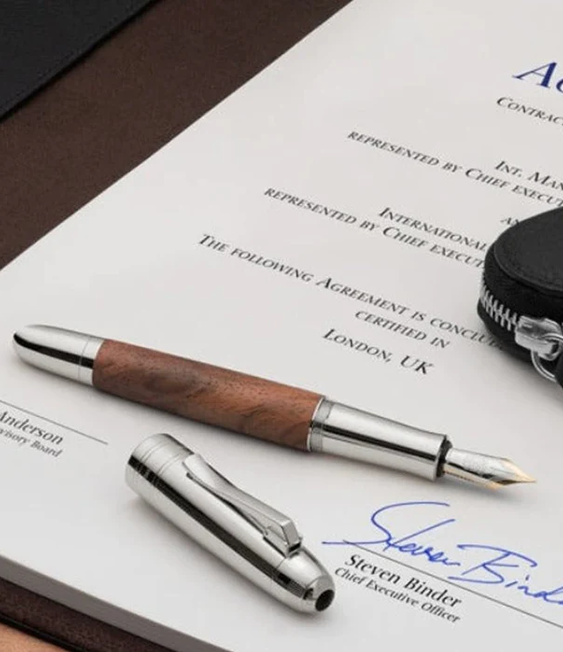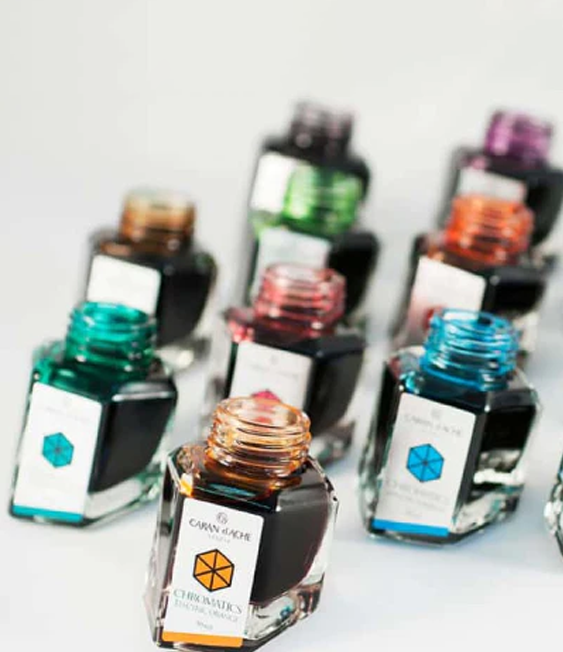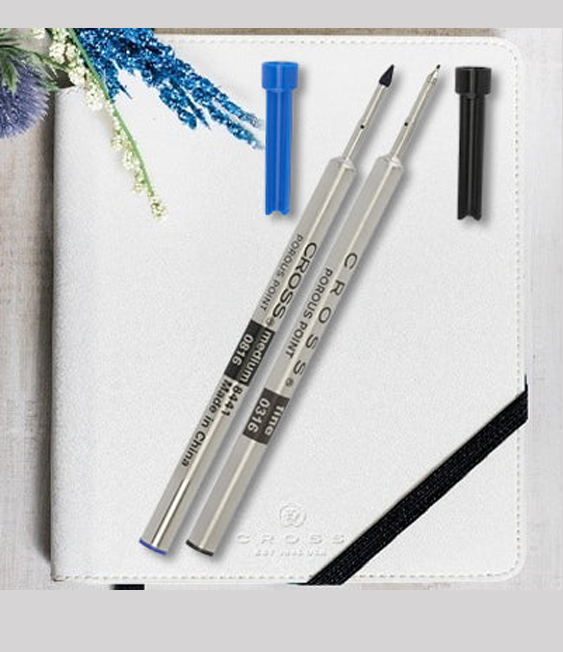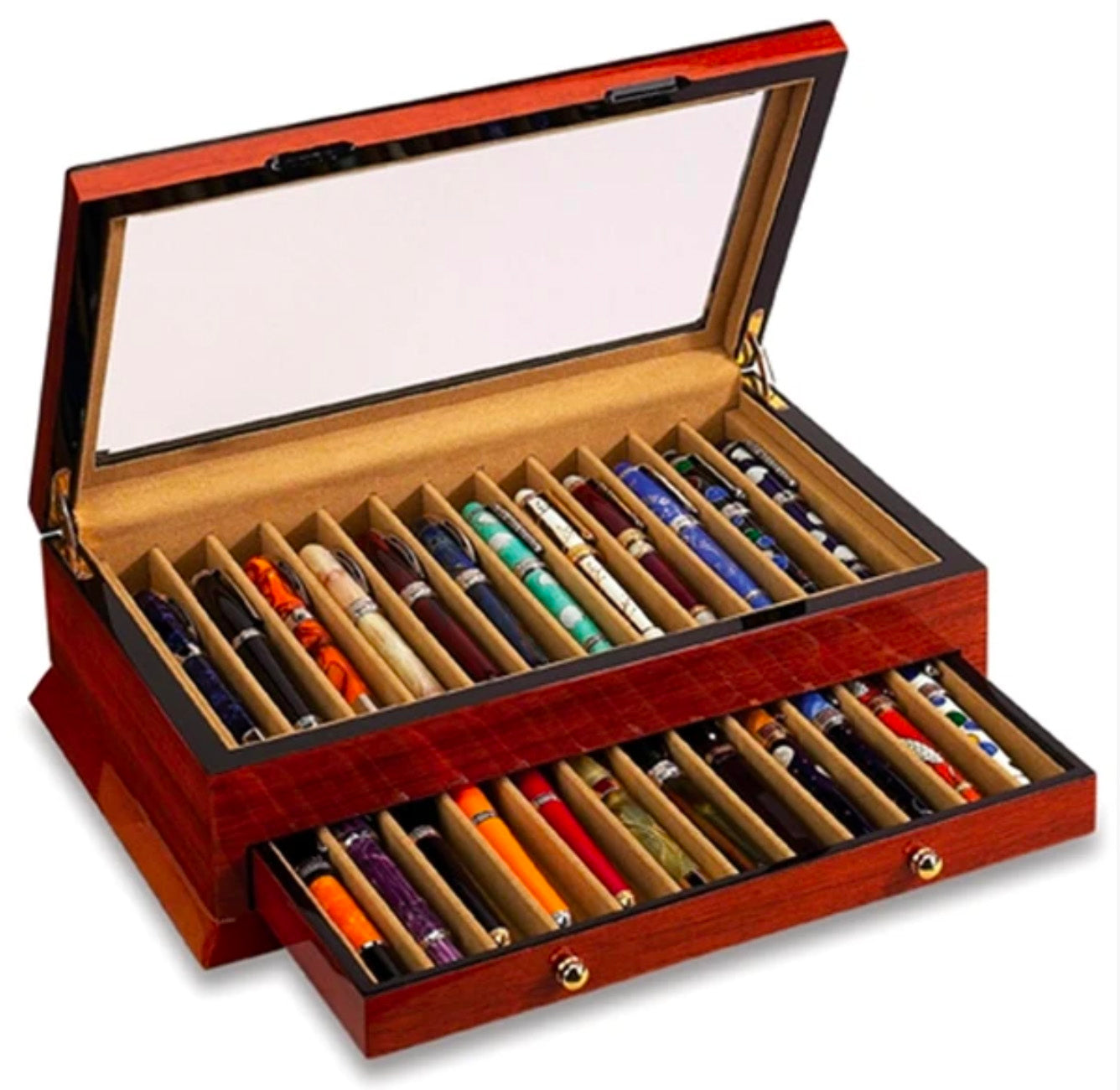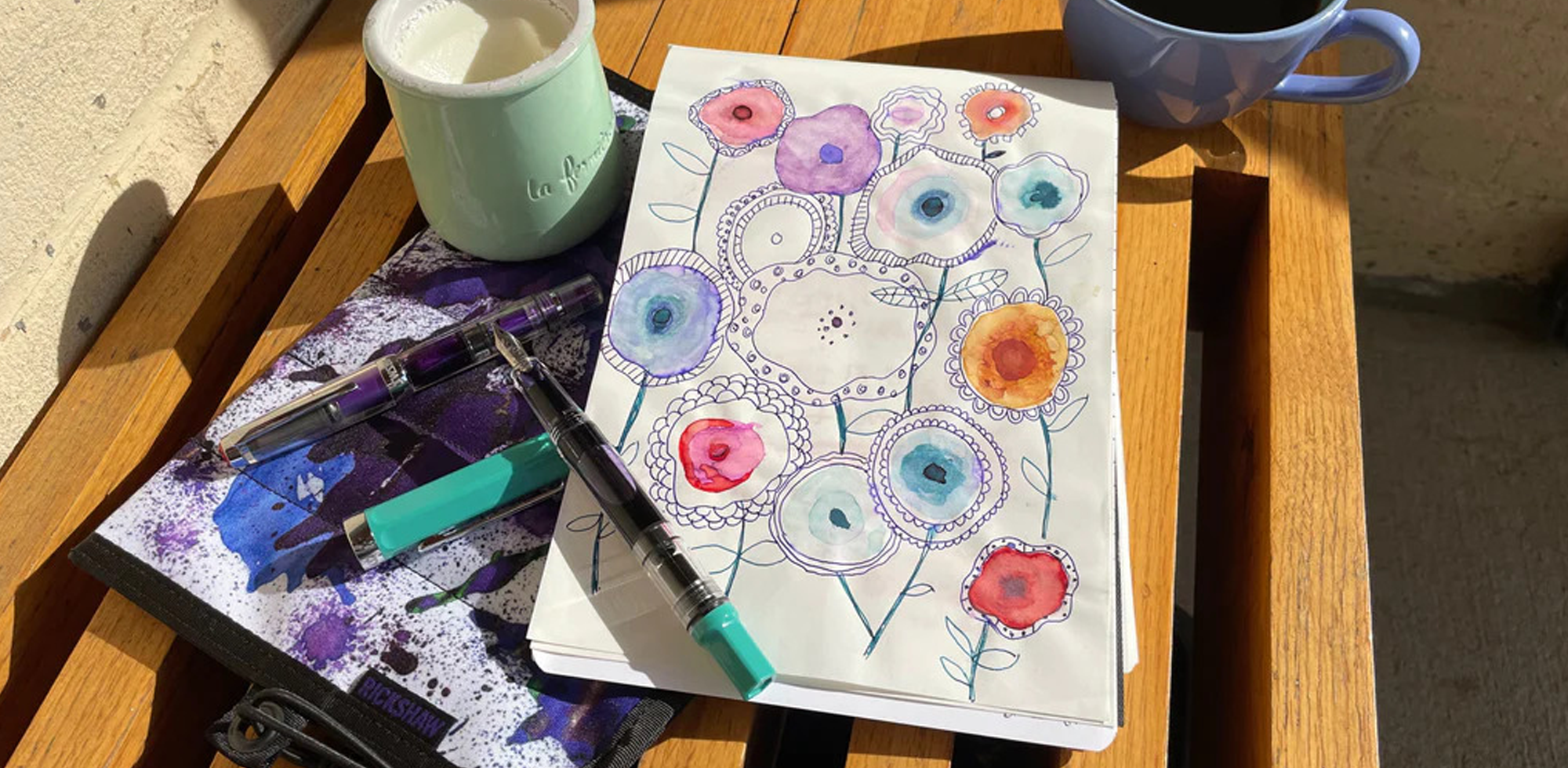High-quality fountain pens are an investment, as pen collectors understand well, and they are well worth the cost as they can serve you beautifully for years to come. That said, it’s important to note that the exact life span of a pen is highly dependent on how it is cared for. Here are five things that every pen enthusiast can do to protect their investment and keep their fountain pens looking and writing well for as long as possible.

1. Properly store each pen
While fountain pen shafts are typically manufactured from hard resins, metal, or even stone, they can still be damaged if they are handled carelessly. Instead of tossing your fountain pen in your bag where it may get bumped and jostled, consider investing in a carrying case. The type and style of the case are up to you. Cases can be as simple as a leather sleeve to hold a single pen or as elaborate as a desktop box that can house your entire collection.
Cases serve more than one purpose for pen collectors. In addition to protecting the pen from physical damage, they also provide a secure place for you to store your pen when it is not in use. Putting your pen in the same place each time you finish writing makes it less likely to get lost or tossed aside by accident. It will also ensure that your fountain pen is correctly stored with the nib pointed up. Positioning the pen this way employs gravity to keep the ink from pooling and drying in the nib.
2. Take care of the nib
The nib of a fountain pen is one of the most critical parts. It is your point of contact with the paper, and it is the final step in the ink delivery system of the pen. Any damage, warping, or bending of the nib will affect how your pen writes significantly. While some nibs are made of stainless steel, others are made of softer metals such as gold, making proper nib use and care essential.
The most important thing to remember about your nib is that it does not require pressure to write the way a pencil or cheaper pen does. The ink should flow freely between the nib tines onto your paper as your write. In some instances, such as when doing calligraphy, slight pressure may be used to draw broader lines. However, in everyday use, this pressure is unnecessary and can warp the nib.
It is also a good idea not to lend your pen to others. Over time, the nib will adapt to your style of writing. It may bend ever so slightly to accommodate the angle at which you hold the pen and the direction you form your letters. Allowing another person to use your pen may cause variation in the nib that does not work well with your style.
3. Use it or store it
The ink used in fountain pens is always free to flow into the nib of the pen. Once in the nib, it is exposed to the surrounding air. If you don’t use your pen frequently, this residual ink can dry in the nib of your pen. For this reason, it is a good idea to make sure you are using your pen regularly.
If you know that you will not be using it for a few days or more, consider draining the ink and rinsing out your pen and nib with distilled water. Storing your pen without ink will keep clogs from forming in the pen that would cause problems the next time you try to use it. In particular, black ink can be a problem, as it contains gum arabic, which can permanently damage your nib if left stagnant for too long. Your pen should be cleaned every few weeks as a preventative measure.
If you do find that your pen won’t write after sitting for a couple of days, it is likely due to dried ink in the nib or the pen. Resist the urge to force the ink out of the nib, as these efforts will likely cause more harm than good. Instead, try wiping the nib with a lint-free cloth. Alternatively, you can wipe it with some spare ink of the same color. If these actions do not get the ink flowing again, you may need to rinse out the nib and drain the ink to remove any clots from the pen.
4. Use fresh ink
Fountain pen ink does not last indefinitely. A bottle of ink will usually last one to two years if stored properly. Ink should always be kept out of direct sunlight to avoid color fading. If you are using older ink, be sure to check it first. Start by looking for mold growing on the surface of the ink. Second, give the ink a good stir. Look for sediment or clots forming in the liquid. Filling your pen with clotted ink is a recipe for disaster. The clots will no doubt clog the pen, preventing it from writing.
5. Avoid treated paper
Paper treated with chemicals can absorb fountain pen ink differently. Some of these types of paper don’t absorb it well at all, and you’ll end up with more wet ink on the paper’s surface that can build up on the nib as your write. This excess ink can cause clogs in the nib. If your pen is not working well after writing on smooth paper, try gently wiping it to remove the clog. If the problem persists, it is best to rinse out the nib and try again. The easiest way to avoid this problem, however, is to use paper that is fountain pen-friendly.
Keeping a fountain pen in working order is not hard if you understand the potential problems and how to prevent them. Filling your pen with fresh ink and using your pen often will go a long way towards avoiding unnecessary maintenance. Taking the time to store and clean your Montblanc, Pelikan, Lamy, or Visconti fountain pens properly can keep them looking and writing like new for years to come.


